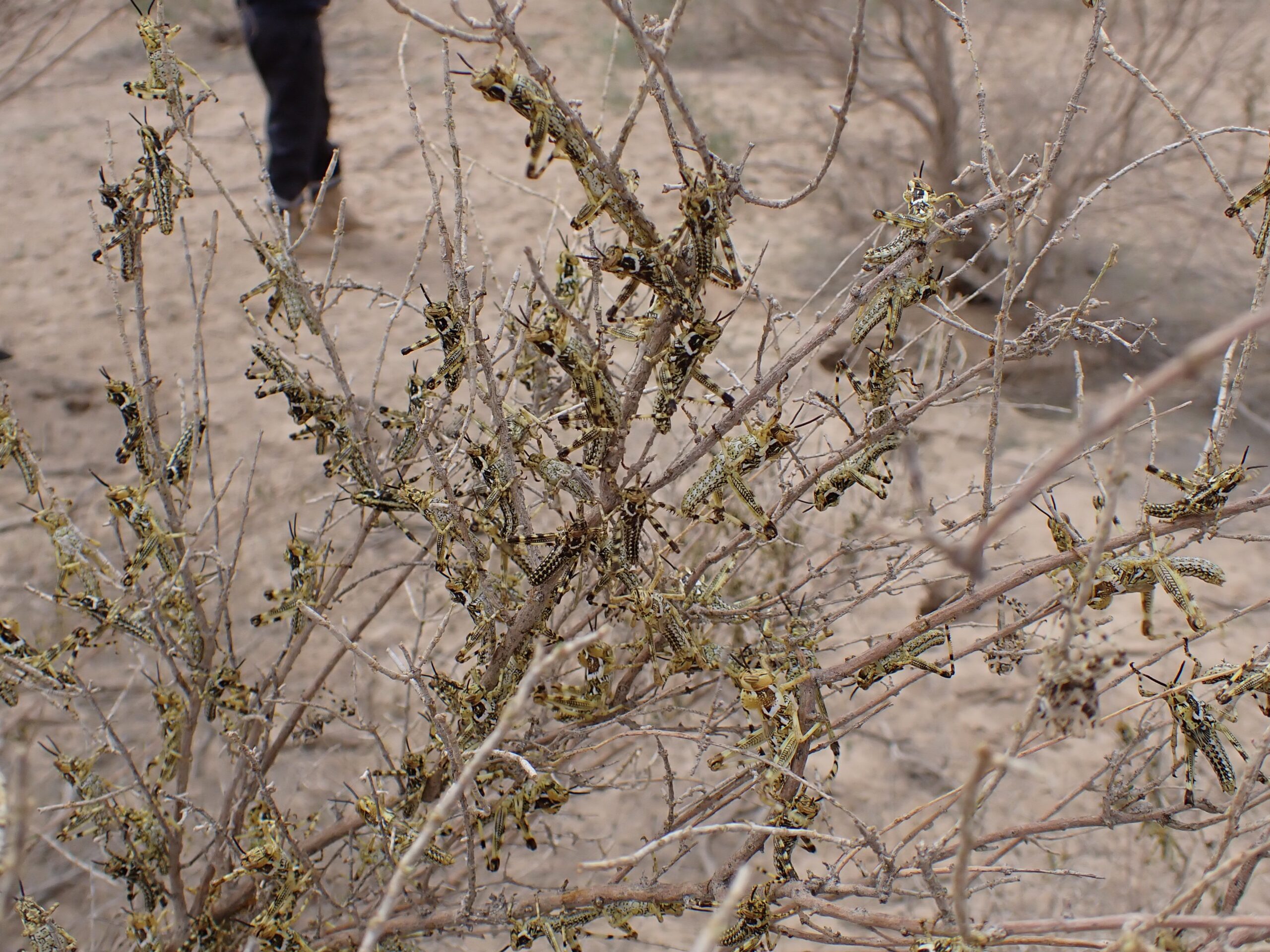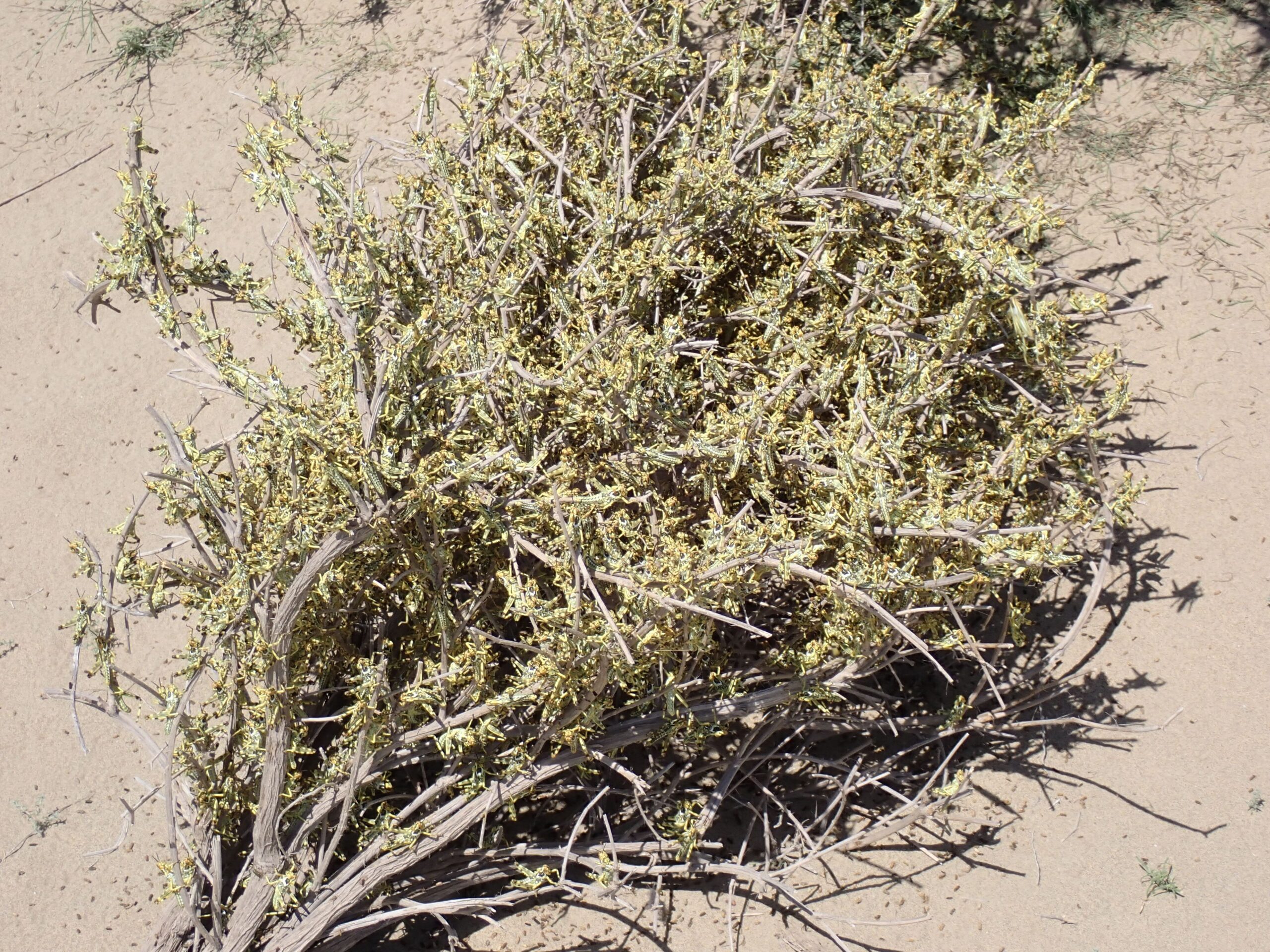According to experts in Uzbekistan, a comprehensive approach that includes monitoring populations, predicting their migration, and using integrated control methods that do not harm the environment is required to prevent annual locust attacks from causing serious damage to agricultural crops.

In Uzbekistan, where agriculture is one of the key sectors of the economy, locust attacks can have devastating consequences for food security. Locusts are particularly dangerous during the period of mass reproduction, and their invasion leads to reduced crop yields and economic losses.
Increasing temperatures and changed precipitation regimes in recent years have createdfavourable conditions for locust reproduction. For example, in 2023, spring temperatures in Uzbekistan were 1.5 degrees above average, which led to the early emergence of locust swarms in the south of the country. Abnormally warm winters and spring rains provoke an early and massive increase in locust populations.
Uzbekistan’s geographical location also makes it vulnerable to locust migration from neighbouring countries such as Afghanistan and Kazakhstan. Winds and favourable climate conditions enable locusts to move over long distances.
Over the past five years, locust infestations have been observed in Uzbekistan several times, the most massive of which were recorded in 2020 and 2021.
In the early summer of 2020, Uzbekistan experienced a massive outbreak of locusts that migrated from neighbouring countries. This was part of a broader invasion that affected a large part of Central Asia.
2020 was one of the most critical years when locusts attacked more than 1 million hectares of agricultural land in Uzbekistan. The outbreaks occurred in Tashkent, Samarqand, and Surxondaryo regions.
Locust attacks also occurred in 2021, but their scale was smaller than in the previous year. The main affected areas included Tashkent and Bukhara regions. In the Surxondaryo region, for example, about 2,500 hectares of crops were destroyed, resulting in significant economic losses and reduced crop yields.
Locusts became a threat again in 2022, especially in southern regions such as Surxondaryoand Andijan. However, control measures, including using biopesticides, had a significant impact on reducing damage.
According to the World Bank, locusts damaged about 1.5 million hectares of agricultural land in Uzbekistan in 2020, causing up to 70% of crop losses in some regions, especially in Surxondaryo.
Estimates of economic damage from insect infestations vary, but overall damage could reach millions of dollars, according to the World Bank. In 2021 and 2022, the impact of locust invasion was also felt, although specific data on losses in these years is less available.
In general, the World Bank and other international organisations estimate the total potential economic losses from locust infestations in affected countries in the billions of dollars. Their studies showed that in East African and Asian countries, the total losses caused by locust infestations could be around $8.5 billion, considering agricultural production and asset damage.
Uzbekistan, along with neighbouring countries, continues to work on locust control using both chemical and biological methods.
In 2023 and 2024, outbreaks were less severe than in 2020 and 2021, but precautions remain relevant.Locust activity was also recorded in 2023, but it did not reach catastrophic proportions. Joint efforts with neighbouring Tajikistan to monitor and control locust populations, focusing on information exchange and cooperation in controlling outbreaks, have produced results.

In 2024, locust outbreaks were also observed in the country, but in a different proportion than in previous years, mainly in the areas bordering Kazakhstan. However, it is impossible to say that the threat of locust outbreaks has been eliminated.
International organisations, such as FAO, have greatly assisted the specialised services of Uzbekistan involved in locust control in localising and controlling infestations and strengthening coordination between the countries of the region.
According to the Agency of Plant Protection under the Ministry of Agriculture of the Republic, which is responsible for locust control in the country, this year, chemical treatments were carried out on 0.375 million hectares out of the planned 0.5 million hectares of land to reduce the risk of Moroccan and other locust species.
In 2024, Uzbekistan conducted several large-scale activities to control locust outbreaks, especially in border areas and environmentally sensitive zones. For example, over 1,600 hectares in Karakalpakstan, Bukhara, Navoiy, and Khorazm regions were treated with biopesticides.
Italian locusts and Saxaul locusts were the main threats; they could severely damage agricultural crops and pastures. The Agency of Plant Protection and Quarantine reported that biopesticide treatments were highly effective in keeping insect populations under control and minimising damage (mortality reached almost 100% in 8-12 days after the treatment).
Joint research was also carried out on the borders with Kazakhstan and Kyrgyzstan to intensify locust population control. Specialists from neighbouring countries sharedinformation and experience to respond to the threat more quickly.
Meanwhile, experts from the UN Food and Agriculture Organisation (FAO) warn that chemical pesticides used to kill locusts are dangerous and harmful because they are poisons. Even if used correctly, they pose risks to the environment and human and animal health.
Chemical pesticides also kill other insects that are essential to maintaining ecosystems. Pesticides contaminate soil, plants, air, and water, making them unusable for many years. Therefore, the experts suggest using biopesticides, which do not have such negative effects on human health and the environment.
This spring, FAO, together with the Agency of Plant Protection, conducted a demonstration and trial of biopesticides in the Jizzakh region. This region treats an average of 4.2 million hectares of land with pesticides each year.
The five-day demonstration consisted of treatments against the Moroccan locust, applying two biopesticides, based on fungi Metarhizium acridum (Novacrid) and Beauveria bassiana(Green Barrier).
The demonstration included a presentation on the use of biopesticides in locust control, a field application of these two biopesticides, a mortality assessment, and an assessment of the impact on non-target organisms.
“Since biopesticides are relatively slow-acting products, the treatments were conducted both eight to ten days before and during the demonstration to show the efficiency and efficacy to participants. The demonstration trial was completed by post-application environmental monitoring to illustrate the safety of the biopesticides to non-target organisms, in particular arthropods,” according to the World Food Organisation’s website.
Meanwhile, experts urge to consider the season of the year for timely treatment of contaminated land.
Ergashjon Inomov, a retired agronomist who worked for many years at an agricultural enterprise in the Bukhara region, said locust swarms are difficult to control when locustsgrow wings and begin to fly.
“My experience shows that it is necessary to kill them when locusts are in the larval stage. Of course, it would be good to prevent them from laying eggs. However, so far, few people in the world have eliminated this plague,” says the former agronomist.
https://cabar.asia/en/locusts-pose-a-serious-threat-to-agriculture-in-uzbekistan



